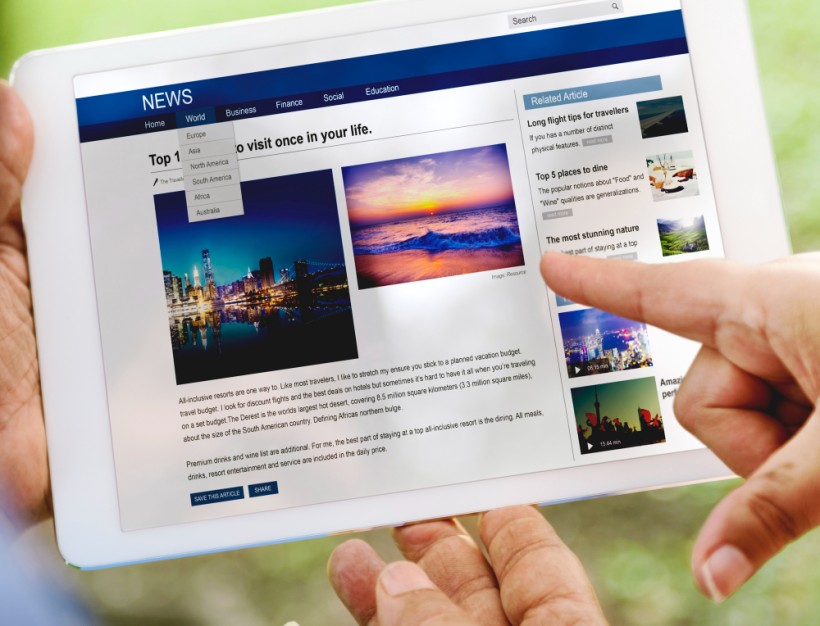Most Founders, Chief Marketing Officers (CMOs), and marketing teams treat marketing analytics like a scoreboard. Run the campaign, check the numbers, paste them into a slide deck. That’s fine if you’re reporting up the chain, but it strips analytics of their real value — helping you make sharper, faster, and more confident decisions about where the business is headed.
Used well, marketing data helps you shape pricing, refine positioning, and inform content by showing you which channels actually drive revenue, which messages land with real buyers, and where your spend is creating profit.
This shift matters more than ever right now because CAC is rising and buying cycles are getting longer, hence budgets need to be maximized. You don’t get to throw ideas at the wall anymore — you have to back your bets with evidence.
According to Salesforce, 88% of marketers use analytics to guide decisions — yet PwC found that 53% of companies still fail to get real value from the data they collect, mostly because they lack the storytelling and decision-making skills needed to turn those numbers into action. That gap is costing teams real money — or creating opportunity, depending on which side of it you’re on.
If you want to grow smarter, you can’t treat analytics as a monthly ritual. You have to use it to guide your next move — like we do at Column.
What marketing analytics shows
When you’re looking at your marketing data, you’re not just trying to answer “Did this campaign perform?” You’re trying to understand four critical things:
Are you reaching the right people?
42% of marketers recognize poor audience targeting as their biggest failure. It’s not enough to get in front of people — you need to get in front of the right people. If your impressions are high but your pipeline is full of low-fit leads, your targeting is off. Marketing analytics helps you track who is actually engaging — and whether they match your Ideal Customer Profile (ICP). Look at job titles, industries, company size, and behaviors across the funnel. If the data doesn’t reflect your ICP, neither will your pipeline.
Is the message landing?
Engagement tells you whether your message is working. High bounce rates or low video watch time means your content is getting seen, but it isn’t hitting home — a resonance problem. Let the data tell you if your story is landing — and where to adjust.
Are you spending efficiently?
Marketing analytics not only help you track performance but also optimize cost. Analytics shows you which channels are giving you the best cost per lead (CPL), cost per acquisition (CPA), and return on ad spend (ROAS). According to industry reports, average ROI on digital ad spend is $2.87 per $1 — but that swings wildly depending on how and where you spend. You want to know which channels give you the best quality leads — not just the most clicks.
Is this translating into pipeline and revenue?
Top-of-funnel metrics are only helpful if they correlate with business results. Use tools like HubSpot, Dreamdata, or Triple Whale (for eCommerce) to trace which campaigns lead to sales-qualified leads, not just Marketing Qualified Leads (MQLs).
The best marketing analytics setups tie your activity to outcomes. From a commercial lens, the only metrics that matter are the ones that inform decisions and drive growth.
How it informs decisions
Once you know what your analytics are telling you, the next step is acting on that insight. This is where the real value shows up — not in the numbers themselves, but in the decisions they help you make.
Where to double down
If a campaign is delivering qualified leads at a lower CAC, that’s your cue to push more budget in. That might mean boosting the budget, building more creative content around that message, or targeting similar segments. But don’t just do more, understand why it worked. What was the segment? What was the hook?
You can isolate those drivers through marketing analytics and replicate that success across the funnel without guessing. Great campaigns are built on well-diagnosed marketing insights.
Where to cut or adjust
The flip side is just as important. When a channel consistently underperforms — weak leads, low conversion, high CAC, and eats up spend, it’s time to pause or redirect.
What to do:
- Set performance thresholds. Know your target CPL, CAC, and conversion rate. If a campaign misses the mark, pause it.
- Diagnose before you dump. Is it the content? The audience? The timing? Use your analytics to isolate the issue.
- Reallocate with intent. Don’t just cut the budget, shift it towards campaigns or channels that are proving commercial value.
The goal isn’t to never fail. It’s to fail fast and fix smart. Underperformance isn’t always a red flag — sometimes it’s a roadmap.
How to refine positioning and creative
Your analytics are always telling you something — not just about performance, but about perception. Every campaign leaves behind clues about what your audience sees, hears, and responds to. Whether it’s a weak call-to-action, vague headline, or the wrong value prop, you can test, measure, and iterate.
Maybe your bounce rate spikes on a certain landing page, or, one ad variation has a 40% higher CTR than the others, or, email open rates tanked after you changed the subject line. These are signals that your positioning needs work.
What to do:
- Test messaging intentionally. Don’t just swap words — change angles. Test emotional vs. functional benefits. Test urgency vs. logic.
- Watch user behavior. Use heatmaps, scroll depth, and exit rates to see where attention drops.
- Close the loop with sales. What are buyers saying on calls? Does your content match the way they describe their problems?
Smart founders use analytics to run constant micro-adjustments that compound into commercial gains over time.
Practical examples
High reach, low click-through
You’ve launched a campaign that’s generating tons of impressions. Visibility isn’t the problem — you’re getting seen. But your click-through rate is dismal, sitting well below the average 6.64% for search and 0.57% for display ads.
That’s a sign your message isn’t hitting. Either the creative doesn’t make people care, or the call-to-action isn’t strong enough to get them to act.
What to do:
- Sharpen the creative: Revisit your hook. Is it clear who the message is for and what pain it solves? Swap generic headlines for ones that call out a result or consequence. Instead of “The easiest way to manage projects,” say “Cut your project turnaround time by 30%.” Make it outcome-driven. Show people what’s at stake if they don’t act and what they gain if they do.
- Strengthen your CTA: Your call-to-action is the moment of conversion, not just a closing line. “Learn more” might not create the urgency needed. Swap it for something that speaks directly to the outcome or pain point. Try “See how it works,” “Get your free demo,” or “Cut your CAC in half.” The best CTAs earn attention by offering clarity and relevance.
- Consider the format: Sometimes the message is right, but the format’s getting in the way. A static image ad might not do justice to a nuanced offer. If your product has a learning curve or a visual payoff, consider using short videos, carousels, or animated explainers. Interactive formats let you showcase benefits quickly and contextually. When in doubt, test it — a simple format change can unlock movement in a stuck campaign.
Check out our post on content ideas and formats.
Strong engagement on one channel, weak on another
You’re running the same campaign across multiple platforms, same message, same creative, but one of them is clearly outperforming the rest — better engagement, higher shares, more comments. The other channels are flat.
Your analytics are pointing to a preference. Maybe your audience spends more time on LinkedIn, and your message fits the tone and format of that platform. Maybe your content is too nuanced for YouTube but performs well in email. Ignoring those cues would lead to waste spending.
What to do:
- Lean into what’s working: Reallocate budget, content production, and campaign focus toward the channels where your audience is already showing up and responding.
- Match message to medium: Some content just performs better in certain formats — what crushes on LinkedIn might flop in a banner ad. Longform thought leadership won’t work in a 15-second Instagram story. Tune your creative to the platform.
- Use underperforming channels to test: Don’t immediately kill an underperforming channel; use the insight to experiment — Try tweaking the message, format, or cadence first to fit the context of the platform.
Here’s our blog post on marketing channels to guide your decision making.
High clicks, low conversions
Your ad is working — it’s generating clicks. But the conversion rates are low; when visitors land on your site, they leave. This drop-off isn’t just frustrating, but it is also expensive.
Often, it means the landing page doesn’t match the promise made in the ad. Maybe the offer feels underwhelming. Maybe the page is too slow — reports indicate that if a mobile user has to wait more than 5 seconds for your landing page to load your chances of losing a lead increases. Or maybe it’s just confusing.
What to do:
- Check ad alignment: If your ad promises a free tool or big benefit, the landing page should deliver that above the fold — clearly and fast.
- Improve speed: Use tools like PageSpeed Insights to cut load time. Seconds matter.
- Simplify the offer: One CTA. One next step. No clutter. Just like this section.
- Use heatmaps and session replays: Use tools like Microsoft Clarity, Hotjar, or FullStory to see how people actually interact with the page. Where do they click? Where do they stop scrolling? Where do they exit?
At Column we help B2B and service businesses build awareness, generate qualified leads, and close more deals through precision-targeted ad campaigns.
Good impressions, poor audience quality
Your campaign is pulling in the numbers — impressions look great, maybe even your CTR is decent. But once the leads come through, something’s off. They’re unqualified. Wrong industry. Wrong job title. Or they’re just not decision-makers.
What to do:
- Revisit your Ideal Customer Profile (ICP).
Go back to the source. Is your ICP based on assumptions from when you first launched? Are you using vague criteria like “mid-market tech companies” when more of your best customers actually fall into a tighter niche?
Get specific. Nail down the firmographics, job titles, use cases, and pain points that define your best-fit customers. Then rebuild your targeting around that. A tighter ICP sharpens everything — your messaging, your media spend, and your ability to attract revenue-ready buyers.
- Refine targeting parameters.
After well-defining the ICP, you need to tighten your targeting. Job titles like “manager” or industries like “tech” are too broad to produce consistent quality. Inside your ad settings, try to get sharper: narrow down by seniority, company size, niche sub-industry, or specific tools and platforms your buyers use.
Also consider behavior-based filters such as previous site visits, content interactions, or firmographic signals to go beyond static attributes.
- Review audience exclusions.
Sometimes, who you exclude matters more than who you include. Exclusions help protect your budget from going to waste on low-fit segments — like existing customers, job seekers, competitors, or irrelevant industries.
Most ad platforms let you filter out by job title, company list, domain, or even behaviors. Don’t treat exclusions as an afterthought. Use them as a precision tool to tighten your targeting and keep your campaigns focused on the people who are actually likely to buy.
- Segment your data.
All leads aren’t created equal, and your analytics should reflect that. Don’t just look at volume; break down lead quality by source, campaign, and even creative variation. You’ll often find that some channels consistently deliver higher-fit prospects while others inflate your numbers with noise.
Dig into patterns. Are your best-fit leads coming from LinkedIn, while paid search brings in price shoppers? Is one ad consistently converting decision-makers while another pulls in interns?
Segmentation helps you see the signal through the clutter. It tells you not just what is working, but who it’s working on, so you can focus your spend on the messages and channels that attract the right buyers.
Strong performance in one region, weak elsewhere
You’re seeing excellent results in one region — strong engagement, healthy conversion rates, and promising CAC. But the same campaign underperforms in another market.
This is often a sign that your message only resonates in certain cultural or market contexts.
What to do:
- Audit your messaging by market: Does the tone, reference points, or value proposition translate culturally and commercially?
- Localize your creative: That could mean using region-specific references, industry jargon or visuals that feel familiar to the audience.
- Get local feedback: Work with partners, teams, or even contractors in-region to validate copy and design.
High conversion cost
Your campaigns are technically converting — leads are coming in, deals are closing — but the cost to acquire each customer is climbing.
What to do:
- Revisit audience targeting: High CAC often signals you’re targeting too broadly or inefficiently. Test smaller, niche segments with stronger intent.
- Refresh your creative: Stale ads get ignored. Test new angles, formats, and value props to drive better performance without raising spend.
- Diversify your channels: If one channel is getting more expensive, it might be time to test others. Look for underpriced attention elsewhere — or retarget warm audiences more aggressively.
- Reassess the offer: If your funnel relies on big discounts to convert, your CAC is artificially inflated. A stronger offer or better onboarding experience can often convert at a lower cost.
High CAC is a signal to tweak early before your budget bleeds dry.
Final thoughts
Analytics should guide your next move. They show you what to fix, where to invest, and what to stop doing.
Want to learn more? Check out these Column post to know which metrics to track:
The Complete List of 100+ PR Metrics You Need to Know
6 Content Fatigue Metrics to Track Right Now
LinkedIn Analytics Guide: Key Metrics to Track for Business GrowthAnd if you need help diagnosing your marketing analytics to make better decisions, Column can help. Reach out today.
Gideon Onunwa is a research analyst at Column. With certifications in data science and IT he translates data into clear, actionable insights through visualizations and reports that inform smart decisions across industries such as health, science, communications, and technology.





